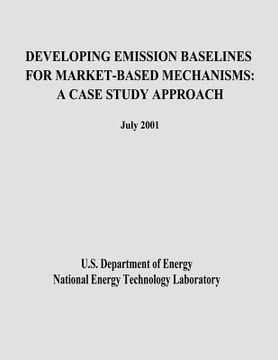Synopsis "Developing Emission Baselines for Market-Based Mechanisms: A Case Study Approach"
Concern about increasing atmospheric concentrations of carbon dioxide and other greenhouse gases, and the potential impact of these increases on the earth's climate, has grown significantly over the past decade. This concern has led to a series of international meetings and agreements seeking to stabilize atmospheric greenhouse gas concentrations. In 1992, at Rio De Janeiro, the Framework Convention on Climate Change (UNFCCC) was signed by more than 160 countries, including the United States. There was widespread agreement among the signatories on the potential negative effects of climate change under a business-as-usual future. Under the convention, the developed countries (referred to as Annex I countries) were assigned primary responsibility for addressing the climate change issue. However, between 1992 and 1997, Parties to the Convention strongly disagreed over what policy instruments should be used to curb global climate change, and what, if any, targets and timetables should be set for achieving emission reductions. A break in the negotiations occurred in late 1997. At the Third Conference of Parties1 held in Kyoto, Japan in December 1997, a series of firm emission reduction targets were agreed to by the Parties The industrialized countries agreed to reduce their greenhouse gas emissions by an average of 5.2 percent from 1990 levels by 2008-2012. The U.S. agreed to limit its emissions to seven percent below 1990 levels. Since then negotiations on implementing these reductions have stalled and the Protocol has not been ratified. However, major progress in allowing the use of market mechanisms to achieve emission reduction goals occurred at Kyoto. Emissions trading and a new concept where entities can acquire credits for emission reduction activities were among the market-based mechanisms under consideration. This report is concerned exclusively with the latter. This report represents a step towards the development of protocols for the estimation of greenhouse gas emission reductions resulting from potential market mechanism projects undertaken in the power sector. It deals specifically with the difficult and complex problem of developing emission baselines for carbon offset projects. Although exchanging credits for emission reduction activities and technologies is a relatively new concept, much has already been written about it. The literature has identified and developed a number of approaches to emission baseline estimation under the market mechanism concept, and the pros and cons of each approach have been assessed and reviewed at some length (see bibliography). However, the literature has to a large extent considered baseline estimation only in the abstract. Different estimation approaches have been compared and contrasted, but, to date, few attempts have been made to apply these approaches. The primary goal of this report is to help advance the discussion of baseline estimation procedures by applying alternative estimation approaches to three hypothetical project case studies. Thus, following an analysis of the three major baseline methodologies under consideration for the market mechanisms, we apply two of these methodologies to hypothetical emission reduction projects.

